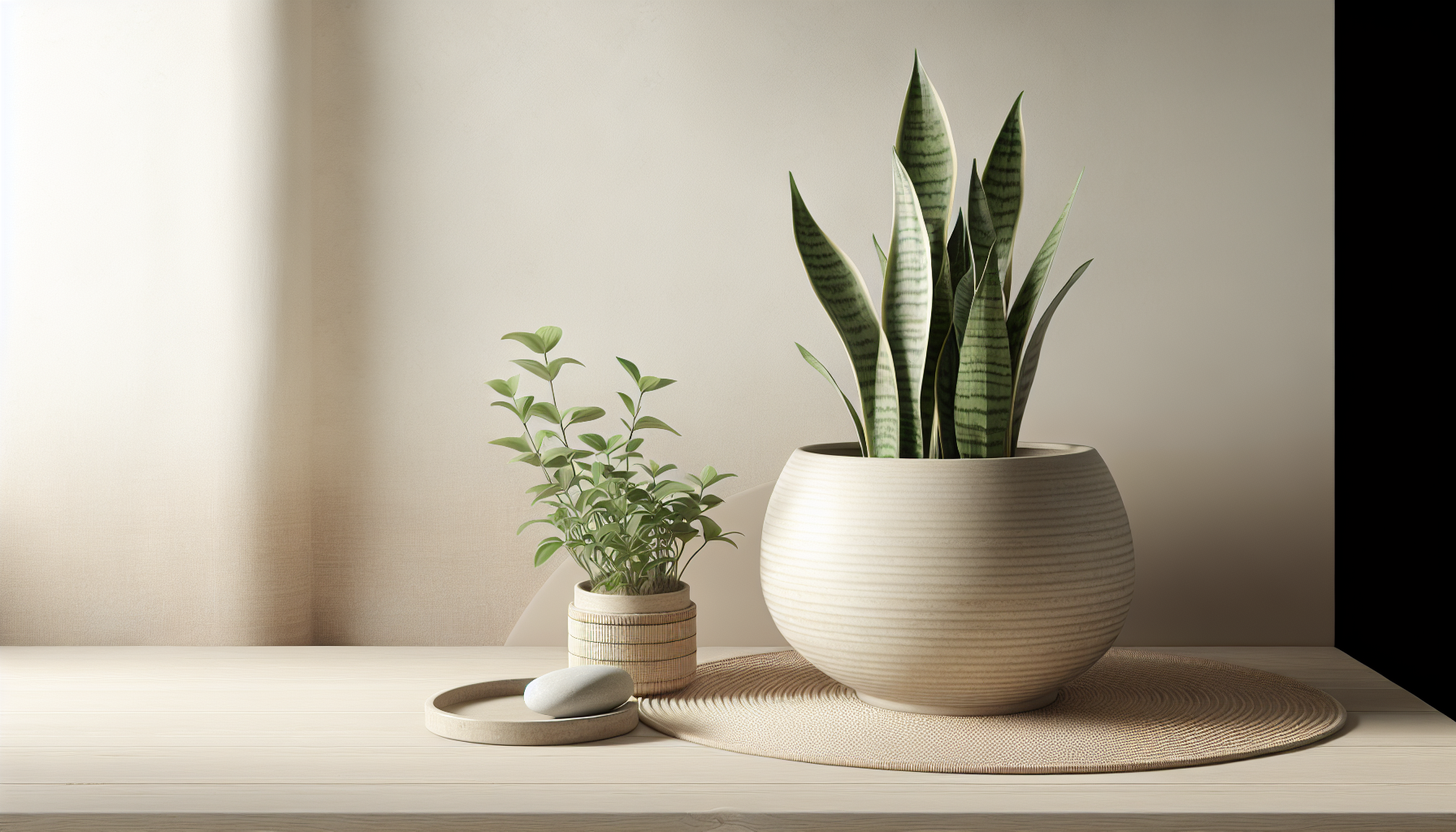What are the best Japandi-style planters to elevate your home decor? If you’re looking for a way to enhance your living space with a serene and calming aesthetic, then you’re in for a treat! Japandi style combines Japanese minimalism and Scandinavian coziness, and it’s taking home decor by storm. Today, we’ll take an in-depth look at Japandi-style planters that can help you create a stylish sanctuary in your home. Let’s get started!
Understanding Japandi Style
Japandi style is more than just a design trend; it’s a lifestyle choice. Originating from the blending of Japanese and Scandinavian design philosophies, this style emphasizes simplicity, functionality, and natural elements.
Key Characteristics of Japandi Style
When you think of Japandi, consider the following essential features:
- Minimalism: Focuses on essential items without cluttering your space.
- Natural Materials: Uses wood, clay, and stone to create a warm, inviting atmosphere.
- Neutral Color Palette: Earthy tones, soft pastels, and white bases create tranquility.
- Functional Design: Each piece serves a purpose while maintaining aesthetic appeal.
These elements make setting up a home that reflects personal style and comfort much easier. Planters, in particular, can be a fantastic way to bring these principles into your living space.
Why Choose Japandi-Style Planters?
When you choose Japandi-style planters, you’re opting for more than just a way to house your plants. These planters can act as decorative elements that enhance your home’s overall aesthetic.
A Breath of Fresh Air
Plants inherently purify the air and add a touch of vitality to any room. Combining natural greenery with planters that reflect Japandi design creates a serene indoor environment.
Space Efficiency
Many Japandi-inspired planters are designed to be space-efficient. This is a significant advantage, especially if you’re working with limited space. The simple designs often allow for nestling multiple planters together, making your greenery feel abundant without overcrowding your room.
Versatility
Japandi style adapts beautifully to any room. Whether you’re searching for planters for your living room, bedroom, or even your kitchen, there’s something to suit each specific environment.
Popular Materials for Japandi-Style Planters
When considering the best Japandi-style planters, you’ll encounter various materials that encapsulate the design’s ethos. Here’s a breakdown of the popular materials used in these planters:
Ceramic
Ceramic is a staple in Japandi design due to its versatility and aesthetic appeal.
- Features: Smooth finish, diverse colors, and intricate designs.
- Benefits: Durable and easy to clean, ceramic planters can attractively showcase your plants while maintaining a minimalist look.
Wood
Wooden planters bring warmth to your home.
- Features: Natural textures and grains.
- Benefits: Biodegradable and sustainable, wooden planters not only look good but also resonate with nature.
Stone
Stone planters exude rustic charm.
- Features: Hefty and sturdy with unique textures.
- Benefits: They do well outdoors and can create a stunning focal point in your garden or on a patio.
Metal
Metal planters can add an industrial edge to the Japanese cozy aesthetic.
- Features: Sleek surfaces, usually in muted colors.
- Benefits: Highly durable and weather-resistant, metal planters are suitable for both indoor and outdoor use.
Concrete
Concrete planters are making waves in modern design.
- Features: Raw and rugged appearances.
- Benefits: Extremely durable with a contemporary look, these planters can blend seamlessly into a Japandi-inspired decor.
Top 5 Japandi-Style Planters for Your Home
Choosing the right planters can significantly impact the overall ambiance of your space. Here are five top-rated Japandi-style planters that you may want to consider.
1. Minimalist Ceramic Bowl Planter
Description: A smooth, round ceramic bowl in an earthy tone. This planter’s simplicity allows your plants to take center stage without overwhelming your space.
Ideal For: Small indoor plants, succulents, or herbs.
Pros: Elegant appearance, easy to match with other decor elements.
Cons: Limited drainage for some plants.
2. Scandinavian-Style Wooden Planter
Description: Crafted from natural wood, this planter showcases unique grains and textures. Its understated design captures a cozy feel, perfect for your living room or bedroom.
Ideal For: Large indoor plants, such as fiddle leaf figs or rubber plants.
Pros: Eco-friendly, adds warmth to any room.
Cons: Requires regular maintenance to prevent wood rot.
3. Modern Stone Planter
Description: Made from natural stone, this planter has a rugged, organic shape. It can work both indoors and outdoors, giving versatility to your greenery display.
Ideal For: Large outdoor plants or as a decorative focal point in your garden.
Pros: Highly durable, makes a bold statement.
Cons: Heavier and can be difficult to move.
4. Sleek Metal Planters
Description: Designed with a sleek, streamlined look, these metal planters often come in muted colors like matte black or muted blue. They resemble contemporary art while being functional.
Ideal For: Dracaena, snake plants, and other tall varieties.
Pros: Modern aesthetic and weather-resistant.
Cons: Can get hot in sunshine, potentially harming some plants.
5. Textured Concrete Planter
Description: These planters often feature geometric shapes and textured surfaces that resonate with modern design. Concrete planters can be stylish without sacrificing function.
Ideal For: Cacti, succulents, or any low-maintenance indoor plants.
Pros: Highly stylish and unparalleled durability.
Cons: Limited variety in color and finish options.
Caring for Your Japandi Planters
Investing in beautiful Japandi-style planters is just the first step. Caring for your plants is essential to maintain their health and aesthetic appeal. Here are some tips for plant care.
Watering
Planters with different materials often have different watering needs.
- Ceramic Planters: Ensure you water thoroughly without letting the pot sit in excess water.
- Wood Planters: Be cautious of overwatering; they need sufficient moisture but can rot if overly saturated.
- Concrete and Stone Planters: Ensure good drainage, especially for plants that prefer less moisture.
Light Exposure
Different plants have varying light requirements.
- Bright, Direct Light: Succulents and cacti typically thrive here.
- Indirect Light: Most indoor plants like snake plants and pothos can do well.
- Low Light: Ferns and ZZ plants can survive in dimmer spaces.
Fertilization
Regular fertilization will help your plants thrive.
- Use a balanced fertilizer every 4–6 weeks during the growing season for most houseplants.
- Organic options can also ensure you maintain a natural living environment.
Pruning and Maintenance
Periodically check your plants for dead leaves or signs of disease. Regularly pruning dead or yellowing leaves can encourage growth and health in the remaining foliage.
Where to Find Japandi-Style Planters
Finding the right Japandi-style planters can be enjoyable if you know where to look. Here is a list of places to consider:
| Source | Pros | Cons |
|---|---|---|
| Home Decor Stores | Variety of styles; in-person shopping experience | May be pricier |
| Online Retailers | Convenience; easy to compare prices | Risk of delivery damage |
| Local Artisans | Unique and handcrafted pieces | May have limited stock |
| Gardening Centers | Specialized options for plant care | Possibly limited decor styles |
Whether you’re on a treasure hunt in your local stores or browsing online, look for planters that reflect your personality while harmonizing with the Japandi aesthetic.
Incorporating Japandi Planters into Your Space
Once you have selected your planters, the next step is to integrate them into your home. This brings together both function and style.
Living Room Arrangements
Utilize any corner or empty shelf for a stylish display. Consider grouping smaller planters together to create visual interest. Add a few books or decorative stones around them for a more personalized look.
Bedroom Touches
Add smaller planters on nightstands or window sills. The calming nature of plants can enhance relaxation and improve air quality while you sleep.
Kitchen Spice Gardens
Succulent planters or small herb gardens can make for attractive accents in your kitchen. Position them near natural light, and you’ll kill two birds with one stone by adding greenery and having fresh herbs at hand.
Final Thoughts
Choosing the right Japandi-style planters can profoundly affect the overall atmosphere of your home. These unique, stylish decor items not only house your plants but also serve as stunning design elements that embody simplicity, warmth, and functionality.
Invest in planters made from materials that resonate with you, and don’t hesitate to explore ways to incorporate them throughout your living space. Each carefully chosen piece can create a haven of tranquility and style that reflects your personality and the beauty of nature. Happy planting!

